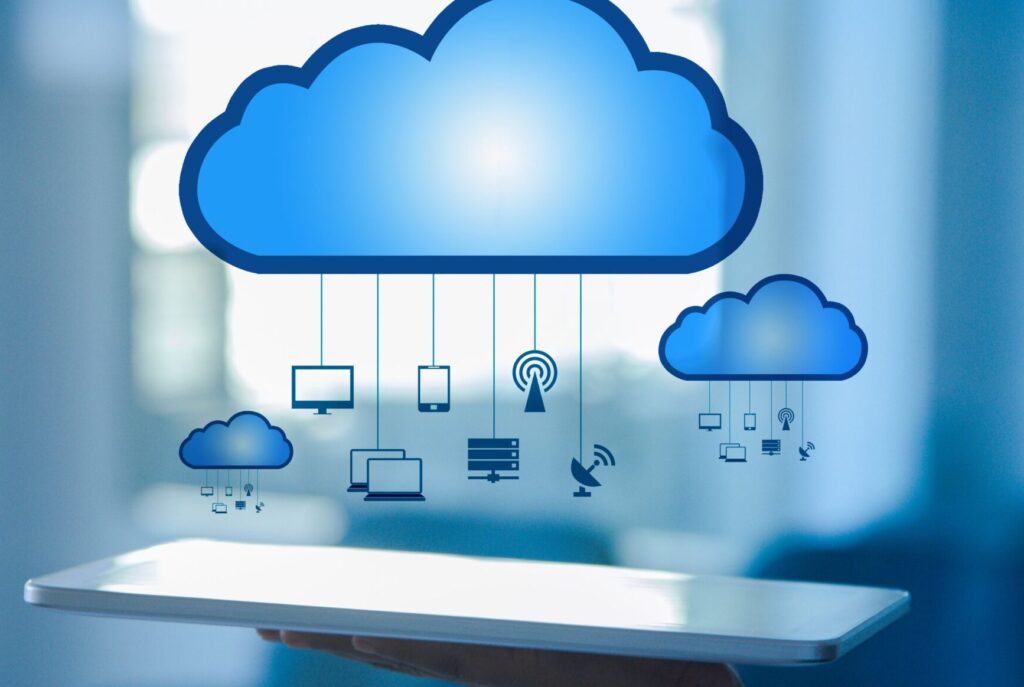What’s the difference between multicloud and hybrid cloud computing?
Both “multicloud” and “hybrid cloud” refer to cloud deployments that integrate more than one cloud. They differ in the kinds of cloud infrastructure they include.
A hybrid cloud infrastructure blends two or more different types of clouds, while multicloud blends different clouds of the same type. You might say hybrid cloud is like combining apples and oranges, while multicloud is like combining different types of apples.
How does cloud computing work?
In cloud computing, applications and data are hosted in remote servers in various data centers, instead of in the same location of the users they are serving. When discussing multicloud and hybrid cloud, each individual cloud service or set of services from each vendor can be called a “cloud” for short.
What is the difference between a public cloud and a private cloud?
A public cloud is a cloud service that multiple customers use, although they don’t interact with each other, just as many customers can use one bank without drawing on each other’s funds.
A private cloud is a cloud service for only one customer. An organization can either build and maintain a private cloud themselves, or they can pay an external vendor to host a private cloud for them.
What does multicloud mean?
“Multicloud” refers to the combination and integration of multiple public clouds. A business may use one public cloud as a database, one as PaaS, one for user authentication, and so on.
If the multicloud deployment includes a private cloud or an on-premises data center as well, then the cloud deployment can actually be considered a hybrid cloud.
What does hybrid cloud mean?
A hybrid cloud combines public cloud computing with a private cloud or on-premises infrastructure. On-premises infrastructure can be an internal data center or any other IT infrastructure that runs within a corporate network.
Hybrid cloud deployments are fairly common. Some businesses migrate partly to the cloud but find it cost-prohibitive or too resource-intensive to move all the way, and as a result some processes, business logic, and data storage still take place in legacy on-premises infrastructure.
Businesses may also choose to adopt a hybrid cloud strategy in order to keep some processes and data in a more controlled environment (e.g. a private cloud or on-premises data center) while taking advantage of the greater resources and low overhead of public cloud computing.
Which type of cloud deployment should businesses use?
Finding the right cloud deployment comes down to a number of factors. Chief among them are cost and security.
Cost
Public clouds typically come with less overhead and less direct management than other types of infrastructure. The cloud vendor handles most, if not all, of the responsibilities that are part of maintaining a data center – provisioning servers, applying security updates, and so on. For this reason, businesses for whom cost is the deciding factor may want to move to a fully public cloud deployment, and perhaps a multicloud deployment.
Security
For businesses that have high regulatory standards for any subset of their data or business logic, a hybrid cloud deployment may be best. With a hybrid cloud, they can keep some data in a more tightly controlled environment, like a private cloud or on-premises data center.
However, these tightly controlled environments are not always more secure. Often, public cloud vendors have more resources for applying patches and protecting data than individual businesses, depending on their cybersecurity budget.
Other factors to consider:
- Time and effort spent on cloud migration: Moving data and business operations fully to the cloud can be a resource-intensive task (although for many businesses it is worth the effort). A full migration into the cloud may not be immediately feasible for some businesses, causing them to adopt a hybrid cloud strategy.
- Reliability: Deploying multiple clouds can help keep websites and applications up and running during periods of high user demand, as a backup cloud can take on some of the workload if one cloud is overwhelmed. This strategy is known as “cloud bursting,” because a workload “bursts” from one cloud to another cloud.
- Vendor lock-in: Using multiple public clouds can reduce dependence on any one cloud vendor. (Cloudflare also helps reduce vendor lock-in by sitting in front of any type of cloud and boosting performance, security, and reliability.)
- Performance: If a public cloud hosts servers at the network edge, moving to the cloud can vastly boost performance by cutting down on latency.
Can a hybrid cloud also be multicloud?
If a hybrid cloud deployment incorporates multiple public clouds, it can also be considered a multicloud deployment. For this reason, the terms are sometimes used interchangeably, even though they actually mean slightly different things.



